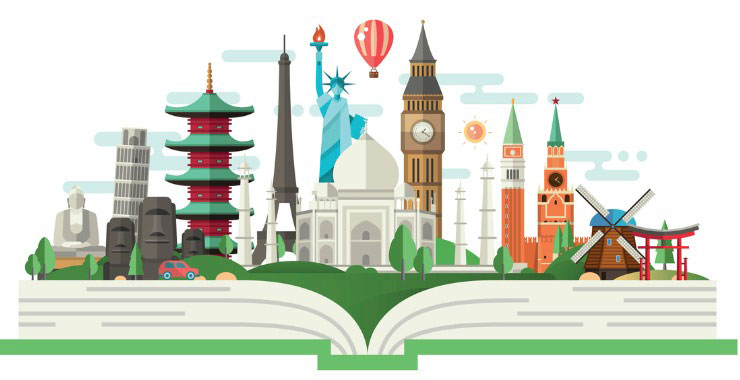

In my good ol’ teaching days, students would frequently ask me: “I am citing this book, but it has six cities—some in the United States and some abroad—associated with its publisher location, so which one do I cite, or do I cite them all?”
Of course, I never had all day, or even a minute, to think about how to address this conundrum (people want a microwave answer to their queries: quick). So, I would always tell my students to pick the first city listed. My rationale was that the most prominent location/número uno/“where it all started” would be ordered first, and as long as that one was listed in the reference, then everything was fine.
Then again, now that I think about it, maybe some of those cities were listed in alphabetical order…
Oh, well. It’s too late for regrets now.
Thankfully, the new guidelines in the seventh edition of the Publication Manual of the American Psychological Association have absolved confused APA Style users such as myself of this geography sin.
That’s right, you heard (read) it here first (at least I hope you did): Publisher locations are no longer included in APA Style references for books and book chapters.
Yes, while the tenure of publisher locations lasted, it was great for us to learn that “AK” is the abbreviation for Alaska and that “Vienna” is more than a sausage. But it was a real headache to open a book and see New York, NY; Boston, MA; Los Angeles, CA; Madrid, Spain; Sydney, New South Wales, Australia; and Mississauga, Ontario, Canada as the publisher location options.
Multiple publisher locations in a book made it really difficult for writers to determine which, or all, locations should be included in a book or book chapter reference. And don’t get me started on the problematic referencing of a book with more than one publisher in various locations.
If there were, for example, five or more publishers associated with a work, a writer would feel compelled (similar to the go-to technique used by vampires on an off-the-air popular TV show that shall not be named because I don’t want any copyright infringement issues) to include all of their locations, resulting in a lot of overthinking and a behemoth of a reference. (For information on copyright and permission guidelines, please see Chapter 12 in the Publication Manual.)
Now, we can all put away the headache medicine and temporarily halt those 3:00 a.m. emails to instructors, librarians, and StyleExpert@apa.org (…probably not). APA Style just made one of its simplest reference formats even simpler. In your reference after the book title, include only the publisher name or names (or imprint or division) as shown on the copyright page of the book. Then add the DOI or URL associated with the work if available (see Sections 10.2 and 10.3 in the Publication Manual).
Fincher-Kiefer, R. (2019). How the body shapes knowledge: Empirical support for embodied cognition. American Psychological Association. https://doi.org/10.1037/0000136-000
Hendrick, S. S., & Hendrick, C. (2019). Measuring love. In M. W. Gallagher & S. J. Lopez (Eds.), Positive psychological assessment: A handbook of models and measures (pp. 219–232). American Psychological Association. https://doi.org/10.1037/0000138-014
If there is no DOI or URL, omit the DOI or URL from the reference, as in the following examples:
Almarode, J., & Vandas, K. (2019). Clarity for learning: Five essential practices that empower students and teachers. Corwin.
Billman, A. K., Hilden, K., & Halladay, J. L. (2009). When the “right texts” are difficult for struggling readers. In E. H. Hiebert & M. Sailors (Eds.), Finding the right texts: What works for beginning and struggling readers (pp. 203–226). Guilford Press.
If a book includes multiple publishers on its copyright page, place the publisher names in the order they are shown on the work (see Chapter 10, Example 24, in the Publication Manual). Separate them using semicolons in the source element of the reference:
American Psychological Association; De Gruyter Mouton; Basic Books.
Not such an onerous change, right? Just a more streamlined approach. Because the more accessible APA Style is, the better it is for users and readers of their work.
This change applies to all types of books (e.g., authored and edited books as well as reference books such as dictionaries and encyclopedias). Please note some works associated with a specific location (e.g., conference presentations) require a location in their references (see Section 9.31 in the Publication Manual).
For more information on these works and on formatting book and book chapter references, please see Chapters 9 and 10 of the seventh edition of the Publication Manual and the reference examples on the APA Style website.
Comments are disabled due to your privacy settings. To re-enable, please adjust your cookie preferences.